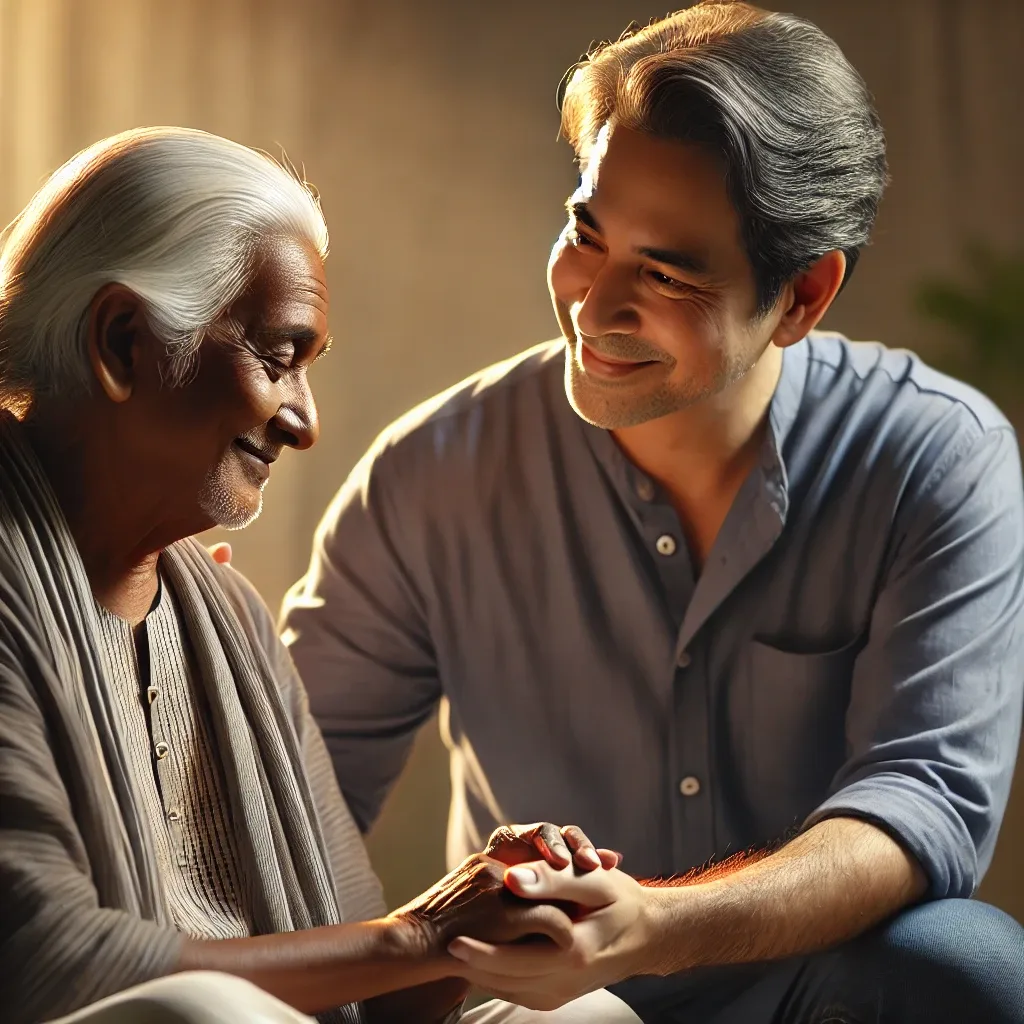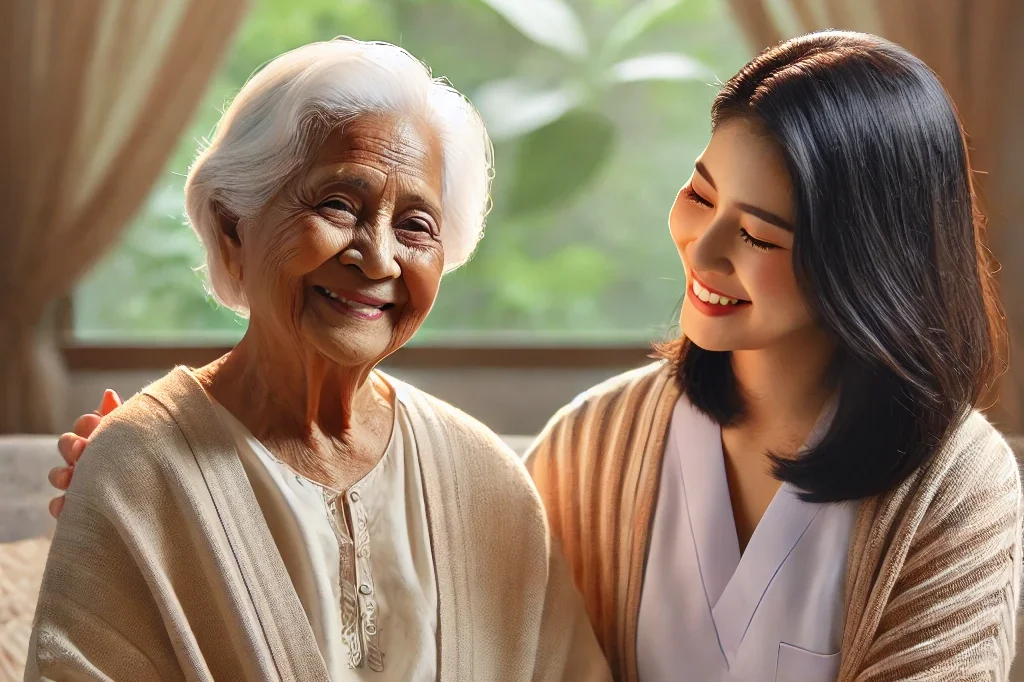
As we age, maintaining healthy vision becomes increasingly important. Eyesight naturally declines over time, and elderly individuals often face unique challenges when it comes to preserving their vision. According to the World Health Organization (WHO), more than 2.2 billion people worldwide experience some form of vision impairment, and many of these cases could have been prevented or treated with early intervention (World Health Organization, 2019). Fortunately, there are many steps seniors can take to protect their eyesight and improve their quality of life. In this guide, we’ll cover essential tips for maintaining healthy eyes and introduce Zoomax, a leader in low-vision aids that help individuals with visual impairments maintain independence and enhance their everyday experiences.
Why Eye Health Matters for the Elderly

Aging affects every part of the body, including the eyes. Common age-related eye conditions such as cataracts, glaucoma, and macular degeneration can significantly reduce vision if left untreated. According to the American Academy of Ophthalmology (AAO), nearly one in three people over the age of 65 experience some form of vision loss, and vision impairment in older adults is closely associated with a decrease in quality of life (American Academy of Ophthalmology, 2021). Regular eye exams and early intervention can help identify and treat these conditions before they significantly impact daily life. For those with low vision, using low-vision aids, such as electronic video magnifiers, can provide significant improvements in daily life.
Core Tips for Maintaining Healthy Eyes in the Elderly

1. Schedule Regular Eye Exams
One of the most important steps seniors can take to preserve their vision is scheduling comprehensive eye exams. According to the Centers for Disease Control and Prevention (CDC), regular eye exams can detect conditions such as cataracts and glaucoma early, leading to better outcomes and improved management of these diseases (Centers for Disease Control and Prevention, 2022). Early detection of conditions like cataracts or macular degeneration can make a significant difference in treatment outcomes. Ophthalmologists recommend annual eye checkups for individuals over 65.
2. Wear Proper Eyewear
For those with vision impairments, wearing glasses or contact lenses tailored to their specific needs is crucial. It’s important that seniors have up-to-date prescriptions to avoid eye strain. For people with low vision (click to view defenition), traditional eyewear may not suffice, which is where low-vision magnifiers from companies like Zoomax become invaluable. Zoomax offers a wide range of low-vision aids, from handheld magnifiers to wearable electronic glasses designed to enhance vision for those who struggle with everyday tasks such as reading or watching TV. These devices are designed to make life easier for individuals with low vision, providing independence and greater functionality.
3. Eat a Healthy Diet
 Good nutrition plays a critical role in maintaining eye health. Research has shown that certain nutrients can slow or prevent the development of certain eye conditions. According to the National Eye Institute (NEI), a diet rich in omega-3 fatty acids, lutein, zinc, and vitamins C and E can reduce the risk of age-related macular degeneration (National Eye Institute, 2021). Seniors should aim to include leafy greens, carrots, fish high in omega-3 fatty acids, and citrus fruits in their diets. For seniors dealing with low vision, maintaining a balanced diet can support overall health and well-being, potentially reducing the progression of eye-related conditions.
Good nutrition plays a critical role in maintaining eye health. Research has shown that certain nutrients can slow or prevent the development of certain eye conditions. According to the National Eye Institute (NEI), a diet rich in omega-3 fatty acids, lutein, zinc, and vitamins C and E can reduce the risk of age-related macular degeneration (National Eye Institute, 2021). Seniors should aim to include leafy greens, carrots, fish high in omega-3 fatty acids, and citrus fruits in their diets. For seniors dealing with low vision, maintaining a balanced diet can support overall health and well-being, potentially reducing the progression of eye-related conditions.
4. Protect Eyes from UV Light
Prolonged exposure to UV light can increase the risk of cataracts and other eye conditions. The American Optometric Association (AOA) recommends wearing sunglasses that block 99% to 100% of both UVA and UVB rays to help protect the eyes (American Optometric Association, 2020). Seniors should also consider wide-brimmed hats for additional protection.
5. Manage Chronic Conditions
Chronic health conditions such as diabetes and high blood pressure can have a direct impact on eye health. Diabetic retinopathy, for example, is a leading cause of blindness in older adults. According to the International Diabetes Federation (IDF), approximately one in three people with diabetes will develop some form of retinopathy in their lifetime (International Diabetes Federation, 2019). Managing these conditions through proper medication, diet, and regular checkups can help protect vision. For those already facing vision impairments due to chronic illnesses, Zoomax low-vision devices can help improve their ability to perform daily tasks. Zoomax products such as the Zoomax Snow 12 or Acesight wearable devices are designed to offer enhanced vision clarity, enabling users to read, write, and see more clearly.
6. Stay Physically Active

Physical exercise improves circulation, which is beneficial for overall health, including the eyes. The American Heart Association (AHA) notes that regular exercise helps maintain healthy blood pressure and cholesterol levels, which in turn supports healthy vision (American Heart Association, 2021). Activities such as walking, swimming, or light aerobic exercises can help seniors maintain better blood flow to the retina and other parts of the eye. For individuals with low vision, it’s important to engage in safe and enjoyable physical activities that take into account their visual impairments. You can explore more tips on how to exercise safely by reading our guide: Safe and Enjoyable Exercise for People with Low Vision.
The Role of Low-Vision Aids in Enhancing Vision
For seniors facing significant vision loss, low-vision aids are essential tools that can improve their quality of life.
The visually impaired elderly population needs specialized ophthalmologic care including clinical assessment, counseling, and rehabilitation in order to attain improvement in quality of life and greater independence. How to manage the low vision of the elderly?
It’s based on their overall health status. Those who have age-related ophthalmic pathology often do very well with stand magnifiers and handheld magnifiers.
Zoomax specializes in advanced, high-quality devices that cater to the unique needs of people with visual impairments. Whether it’s a handheld magnifier or an electronic wearable, these devices are designed to magnify objects, allowing users to see more clearly and engage in activities they may have previously struggled with. Here are some of the top Zoomax low-vision aids:
- Snow 12 – A large-screen, high-definition foldable device for office work, reading, and writing, with text-to-speech functionality.
- Luna 6 – A high-definition handheld device, convenient for spot reading, with wireless charging.
- Luna 8 – A portable/desktop high-definition device, convenient for reading and writing.
- Luna S – An ultra-lightweight and compact handheld device, convenient for spot reading.
- Luna HD 24 Pro – A high-definition, large-screen desktop device, ideal for office work, reading, writing, and more precise and stable use.
- Luna eye – A high-definition, large-screen desktop device, suitable for distance viewing, reading, writing, etc.
- Acesight VR – A head-mounted high-definition device, ideal for watching TV at home, distance viewing, etc.
- Snow Pad – A powerful stand and auxiliary system that can turn any iPad or Xiaomi Pad into a low vision aid. It provides the latest features such as OCR text-to-speech, flexible split-screen functionality, and more. It is designed to help with daily tasks like reading, writing, and studying, while being lightweight and portable.
These products are designed with ease of use in mind and are perfect for seniors who want to remain independent despite their vision challenges. Vision our site to see more product information here.

Conclusion: Invest in Eye Health and Vision Support
Maintaining healthy vision is crucial for seniors who want to stay active and independent. Regular eye exams, a balanced diet, and using the right low-vision aids are all essential steps in preserving eye health. With cutting-edge technology from Zoomax, individuals with low vision can continue enjoying life with greater clarity and independence. For more information on how Zoomax low-vision aids can help improve your life or the life of a loved one, visit Zoomax.com today. Your eyes are invaluable, and investing in proper vision care and assistive devices can make a world of difference.
FAQ Section:
Q: What are low-vision aids?
A: Low-vision aids are devices designed to help people with significant vision impairment perform daily activities more easily. These aids include handheld magnifiers, electronic video magnifiers, and wearable devices, like the ones offered by Zoomax, to improve reading, writing, and viewing tasks.
Q: What is the best magnifier for seniors?
A: For seniors, electronic video magnifiers, such as the Zoomax Luna or Snow 12, offer clear, large displays and are easy to use. They provide higher levels of magnification, which is ideal for reading and other daily tasks.
Q: What causes low vision in seniors?
A: Low vision in seniors is commonly caused by age-related conditions such as macular degeneration, glaucoma, diabetic retinopathy, and cataracts. These conditions affect different parts of the eye, leading to decreased vision that cannot be fully corrected by glasses, contact lenses, or surgery.
Q: Can low vision aids improve quality of life for seniors?
A: Yes, low vision aids can significantly improve the quality of life for seniors by helping them perform everyday tasks such as reading, cooking, watching TV, and writing. Devices like handheld magnifiers, video magnifiers, and wearable technology enable users to maintain independence and stay engaged in activities they enjoy.
Q: What factors should I consider when choosing a low-vision aid?
A: When choosing a low-vision aid, it’s important to consider the level of vision impairment, the types of tasks the user will perform, ease of use, and portability. Consulting with an eye care professional can help determine the most appropriate device based on individual needs.
Q: Are there low-vision aids designed for specific tasks?
A: Yes, some low-vision aids are task-specific. For instance, handheld magnifiers are great for reading labels or small print, while electronic video magnifiers are better for reading books or viewing detailed images. Wearable devices like Zoomax Acesight are designed for extended use, such as watching TV or navigating environments.
Q: What is the difference between handheld and wearable low-vision aids?
A: Handheld low-vision aids are portable and easy to use for quick tasks like reading small text, whereas wearable aids, like smart glasses, are designed for continuous use, offering hands-free operation and allowing users to move around more freely while maintaining enhanced vision.
References:
American Academy of Ophthalmology. (2021). Eye health statistics. https://www.aao.org/eye-health/statistics
American Heart Association. (2021). Physical activity improves overall cardiovascular health. https://www.heart.org/en/healthy-living/fitness
American Optometric Association. (2020). UV protection and eye health. https://www.aoa.org/patients-and-public/caring-for-your-vision/protecting-your-vision/uv-protection
Centers for Disease Control and Prevention. (2022). Common eye disorders and diseases. https://www.cdc.gov/visionhealth/basics/ced/index.html
International Diabetes Federation. (2019). Diabetes and eye health. https://www.idf.org/aboutdiabetes/complications/eye-complications.html
National Eye Institute. (2021). Nutrition and age-related macular degeneration. https://nei.nih.gov/amd/nutrition
World Health Organization. (2019). World report on vision. https://www.who.int/publications/i/item/world-report-on-vision

